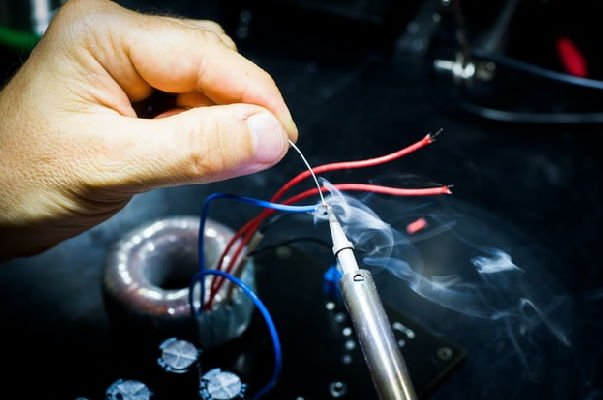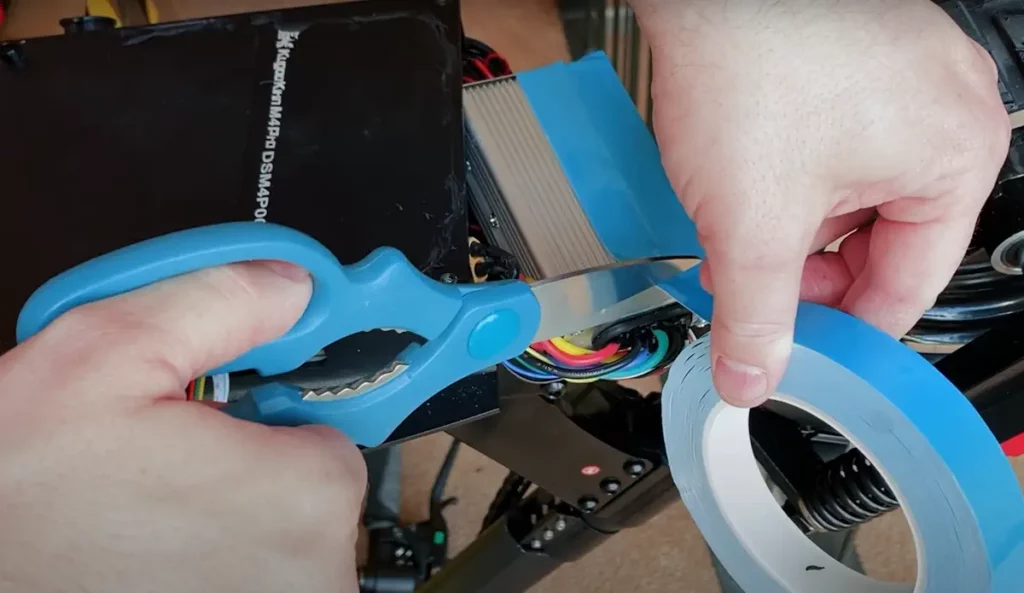Electric scooters health risks are rare and usually not dangerous, but they are still something you should be aware of.

Electric scooters and your health
The most common electric scooter health risks are back pain, neck pain, abdomen pain, kidney pain, carpal tunnel syndrome, finger fatigue, and erectile dysfunction if riding with a seat. The risks are minimal and easily avoided.
Read on to learn more about the most common health risks and how to mitigate them.
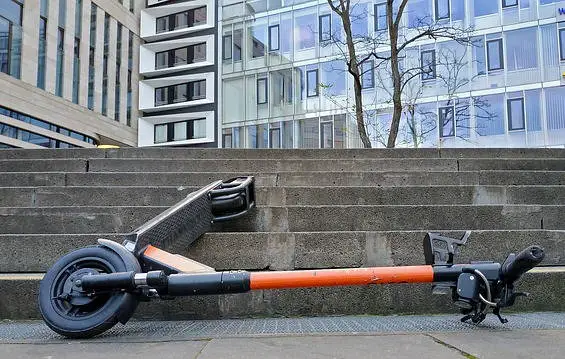
Common electric scooter health risks
If you own or plan to buy an electric scooter, it’s crucial to know its disadvantages and potential health impacts.
While most riders face minimal risks, some situations may require steps to reduce or eliminate them.
Electric scooter rides can cause back pain, neck pain, or abdomen pain

The most common health problem that electric scooter riders face is soreness in the back, neck, sides, abdomen, and sometimes soreness in other body parts.
Why am I sore after riding an electric scooter?
Back and neck pain on electric scooters can result from factors like poor posture, improper riding technique, cold weather, inadequate handlebar height, a small deck size, and scooter vibration.
Chronic conditions can exacerbate these issues. Unnatural stances due to deck comfort can also lead to stiffness.
For instance, I’ve suffered from a back injury and neck stiffness since my teenage years. Prolonged rides make me sore the following night, especially in cold or windy weather or if I’m not dressed appropriately.
However, I’ve learned ways to alleviate or prevent such pain through research and personal experience.
How to prevent back pain, neck pain, and soreness when riding an electric scooter?
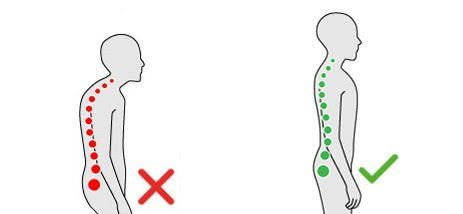
Prevent back and neck pain on your electric scooter by investing in high-quality scooters with good suspension suspension, large pneumatic tires, and strong build quality.
Avoid solid-tire scooters or opt for those with excellent suspension to reduce vibration and shock-related soreness(check this study on the effects of vibration in motorcycle riders here).
If you already have a scooter and can’t upgrade right now, make sure you use the proper riding technique. That includes:
- adjusting your handlebar height to fit you perfectly
- riding with your back as straight as possible and knees slightly bent
- using the correct stance for you (skateboard stance is the best for most riders, with the front foot pointing forward and diagonal, and back foot pointing to the side)
- bunny-hopping (making yourself “lighter” by tightening your body and bending your knees slightly when riding over bumps or holes)
Check the guide on advanced riding techniques to learn more about the proper riding stance and how to bunny-hop.
Here are some additional tips, especially for those with back issues.
First, remember to take breaks during longer scooter rides. Stopping for a few seconds to stretch your body can prevent stiffness and make it a habit to stretch before and after your ride as well.
Dressing appropriately is crucial. Wear long pants or jeans, and consider adding an extra shirt tucked into your pants for added support.
This may sound old-fashioned, but it can work wonders, especially if you have a bad back. It’s particularly important when riding in cold or windy weather; make sure to dress warmly.
For an added layer of protection, think about getting a motorcycle armor or jacket. These are specifically designed to keep motorcycle riders safe and healthy.
Additionally, a kidney belt can provide support and help with back soreness.
Speaking of kidneys…
Electric scooter rides can cause kidney pain

Cold, wind, and vibration during electric scooter rides can lead to side pain, often related to kidney issues. Even a slight breeze can cool the skin rapidly, potentially causing hypothermia, with the kidneys being particularly vulnerable.
This issue isn’t exclusive to electric scooter riders.
It’s more prevalent among bicycle and motorcycle riders. You can find more information on this topic in a relevant Quora discussion on kidney problems and belts for motorbikes.
There is little data on this, but one study in BMJ on bicycle injury in children in British Columbia suggests that kidney injuries can happen.
A friend who rides scooters complained of severe kidney pain, worsened by cold weather and inadequate clothing. Here’s some advice from him on how to deal with it.
How to prevent kidney pain when riding an electric scooter?

The most important step in preventing kidney pain with an electric scooter is to get a stable, high-quality scooter with great suspension and large pneumatic tires. The scooter should shake or vibrate as little as possible.
Try to avoid riding in cold or windy weather, and make sure you dress properly for scooter rides and as warm as possible, even if the weather is not especially cold.
Consider getting a kidney belt or motorcycle armor if you ride a lot.
Maintain your scooter by conducting maintenance routines and regular stability checks. Ensure all screws, nuts, and bolts are tightly secured, and consider using sealants like Loctite for added security.
How tight should a kidney belt be?
Wear the kidney belt around your lower back, between the rib cage and the hips.The belt should be secure and fit you firmly, but it shouldn’t restrict your breathing.
Electric scooter riding can cause carpal tunnel syndrome

Repetitive hand use, combined with ride vibrations, can lead to conditions like carpal tunnel syndrome, cubital tunnel syndrome, and tennis elbow in electric scooter riders.
This is particularly common with twist-throttle scooters, especially during off-road rides.
While more common among cyclists, these issues also affect scooter riders due to similar handlebar-related movements and mechanisms.
While more common among cyclists, electric scooter riders can also experience this issue due to similar handlebar-related mechanisms and movements.
In a carpal tunnel syndrome guide for cyclists, Dr. Michael Behrman, a board-certified hand surgeon, explains that pressure, vibration, and repetitive actions can inflame wrist tendons.
Pinching the median nerve and causing tingling or numbness in the fingers.
How to prevent carpal tunnel syndrome when riding an electric scooter?
To avoid CTS with an electric scooter, the most important step is to have a scooter with good shock absorption, and preferably air-filled tires that provide extra suspension.
While riding, make sure you’re not using the “grip of death” on the handlebars, as that causes a lot of strain on the wrist and the nerves in your hand. Take frequent breaks and stretch your wrists.
If you are noticing some symptoms of carpal tunnel syndrome or other related issues, consult a doctor or a hand surgeon. Symptoms of CTS include:
- ache or pain in your fingers, hand, or arm
- numb hands
- tingling or pins and needles
- a weak thumb or difficulty gripping
You can read more about carpal tunnel syndrome symptoms here: https://www.nhs.uk/conditions/carpal-tunnel-syndrome/.
CTS is rare among scooterists due to less time spent on the road compared to cyclists. Twist-throttle scooters pose a higher risk, but they are less common as thumb-throttle or finger-throttle mechanisms are typical in modern scooters.
However, finger-throttle scooters have their own unique risks.
Electric scooter finger fatigue
In electric scooters with finger-throttle acceleration, riders may experience “finger fatigue”, which is pain or numbness in the finger (usually the index finger) used for acceleration due to strain and overuse.
While somewhat common, this is not as serious of an issue as the other scooter risks.
How to prevent electric scooter finger fatigue?
Prevent finger fatigue on your electric scooter by using a thumb-throttle scooter or replacing the finger-throttle with a thumb-throttle if customization is possible.
This switch eliminates the primary source of finger fatigue.
While thumb-throttles might cause some thumb fatigue, it’s less common and generally considered a superior acceleration mechanism to finger or twist-throttles.
If changing the throttle isn’t possible or you prefer a different type, don’t worry too much.
Finger fatigue is more of an annoyance than a major issue. Taking breaks to rest your hands can help alleviate it.
As with other scooter-related health risks, investing in a high-quality scooter with excellent suspension and pneumatic tires can greatly reduce or even eliminate these concerns.
Electric scooters with seats may cause erectile dysfunction
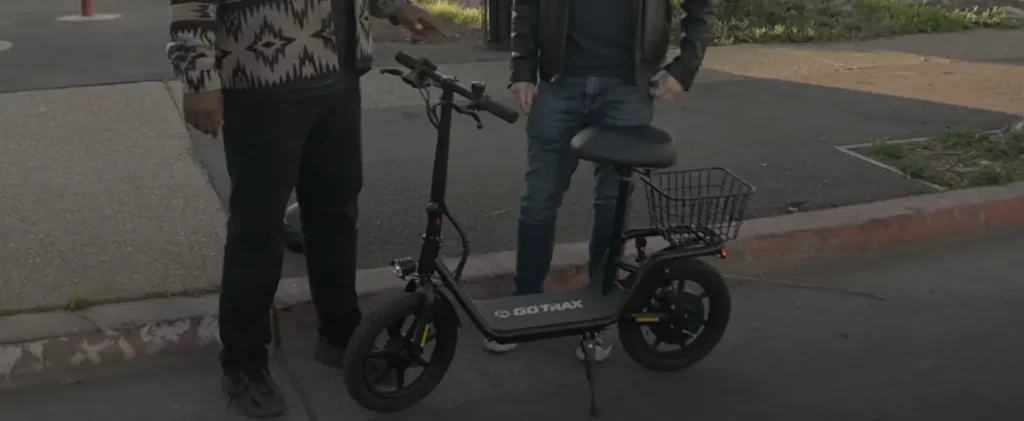
According to WebMD, spending hours on a saddle can cause compression of the arteries and vital nerves in the male genital area. That can lead to pain, numbness, and erectile dysfunction.
Most scooters don’t support a seat, and those that do usually don’t include one. Based on data from EScooterNerds, approximately 85% – 90% of electric scooter riders, including a significant female audience, typically don’t use a seat.
If you do have a scooter with a seat and wish to continue using it, there’s no need to be overly concerned.
The referenced WebMD article pertains to bicycle riders who spend more time on the seat and experience greater pressure in the perineum area due to leg movement, (which is one reason why scooters are better than bikes).
The risk is more significant with traditional bike seats, primarily used by pro cyclists, as they can reduce blood flow by around 80%, leading to erectile dysfunction (ED).
“No-nose” seats are recommended to improve blood flow and reduce this risk, as per WebMD. It’s important to take these health risks seriously and do your best to minimize them.
How to prevent erectile dysfunction while riding an electric scooter with a seat?
Erectile dysfunction risk applies only to scooterists with a seat.
Removing the seat completely eliminates the risk. If you have a scooter seat, take frequent breaks to reduce the time spent sitting (as per WebMD).
Consider switching to a “no-nose” seat to distribute weight to the sit bones, improving blood flow and reducing the risk of ED.
Electric scooter safety
Let’s go through several important studies and research on electric scooter safety.
Electric scooter injuries

One study from the Austin Public Health organization found that 1 out of every 5000 riders of rental scooters has had a serious injury.
Key points to consider are that most were inexperienced riders using rental scooters, often in poor condition, and many did not wear helmets.
A study from the Los Angeles emergency rooms, which looked at riders admitted for scooter injuries, found that only 4.4% of riders were wearing helmets.
A bigger study from the Portland Oregon Bureau of Transportation, which looked at more than 700.000 scooter trips, found that there were 176 injuries (0.02%).
Only 3% of the patients admitted due to scooter injuries were wearing a helmet.
A study of scooter use in the US found that injuries related to electric scooters have increased by 222%, and hospital admissions due to scooter injuries have increased by 365% for a total of 3.300.
This study also suggests that only 2%-5% of injured riders have worn a helmet.
The conclusion is: wear a helmet and follow the scooter safety guidelines. That significantly reduces the chances of a serious injury.
Electric scooter deaths
There were 29 confirmed scooter deaths in 2018, reports a QZ article. The article contrasts that to the deaths of 29 cyclists in 2019 in New York alone, and to the 36.000 motor vehicle deaths in 2018.
The article does not mention the total number of scooter rides that resulted in these 29 deaths, but a study from the National Association of City Transportation Officials finds that there were 84 million scooter rides in 2018 (you can find the data here).
The significant difference in the numbers is due to the much wider usage of bikes and motor vehicles compared to scooters.
The author’s point is that electric scooter deaths receive extensive media attention because they are a novel technology causing disruption, while bike and motor vehicle deaths don’t generate the same level of hype.
Are electric scooters safe?
Electric scooters are generally safe, about as safe as bikes, and probably safer than motor vehicles. Health issues and injuries are possible, but the chances of them happening are relatively small.
Electric scooter health benefits
Riding an electric scooter has a few interesting health benefits.
Riding an electric scooter may be considered exercise. It does include some difficulties and causes some fatigue and strain, and while that’s not enough to call it proper exercise, it’s still much better than sitting.
Electric scooters offer a notable health benefit by reducing stress levels.
Commuting with a scooter instead of being stuck in traffic helps eliminate the stress associated with congestion and road rage, which is a growing concern.
Furthermore, riding an electric scooter can enhance balance and, in some instances, improve one’s sense of direction and navigation.
Take a look at my guides on electric scooter health benefits and the pros and cons of electric scooters to discover more cool things about how electric scooters affect our health.
Conclusion
The primary health risk when riding an electric scooter is back pain, stiffness, and soreness. Proper riding technique is essential to reduce or eliminate these issues.
Other rare issues may include kidney pain, carpal tunnel syndrome, and finger fatigue.
Scooters with a seat pose a potential risk of erectile dysfunction, which can be reduced by using a no-nose seat or not using the seat at all.
A high-quality, safe scooter with large pneumatic tires and good suspension addresses all these issues.
To keep your body warm and your kidneys safe, consider getting a kidney belt or motorcycle armor (check out the guide on scooter accessories to find some good options).


